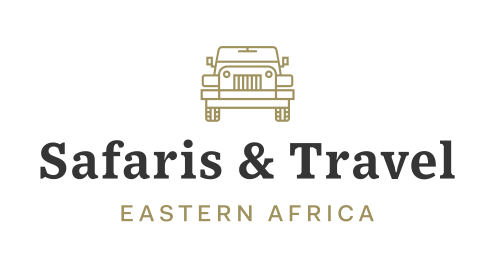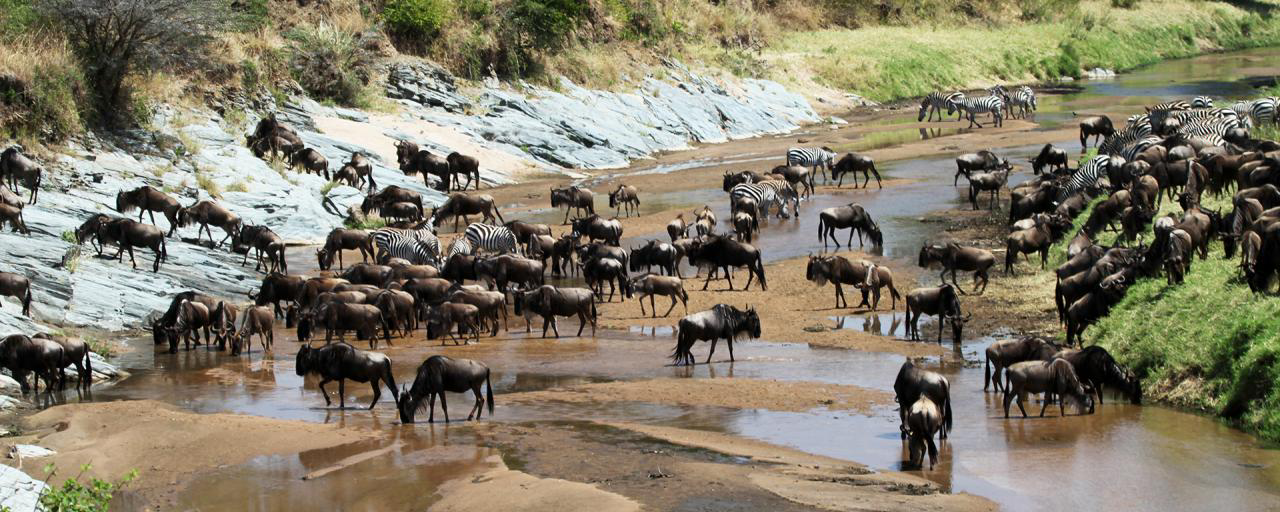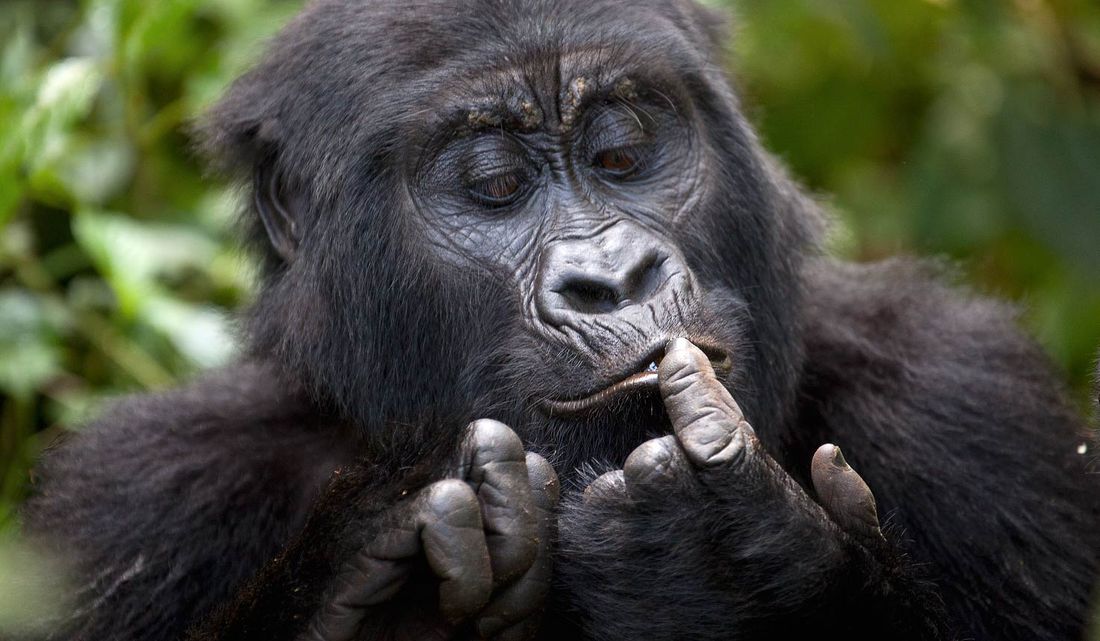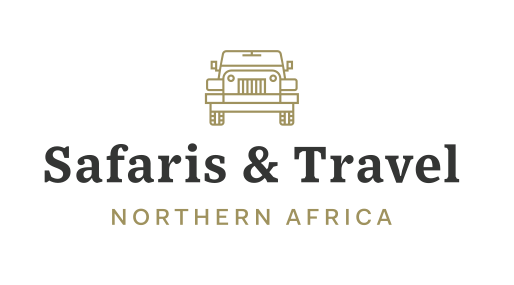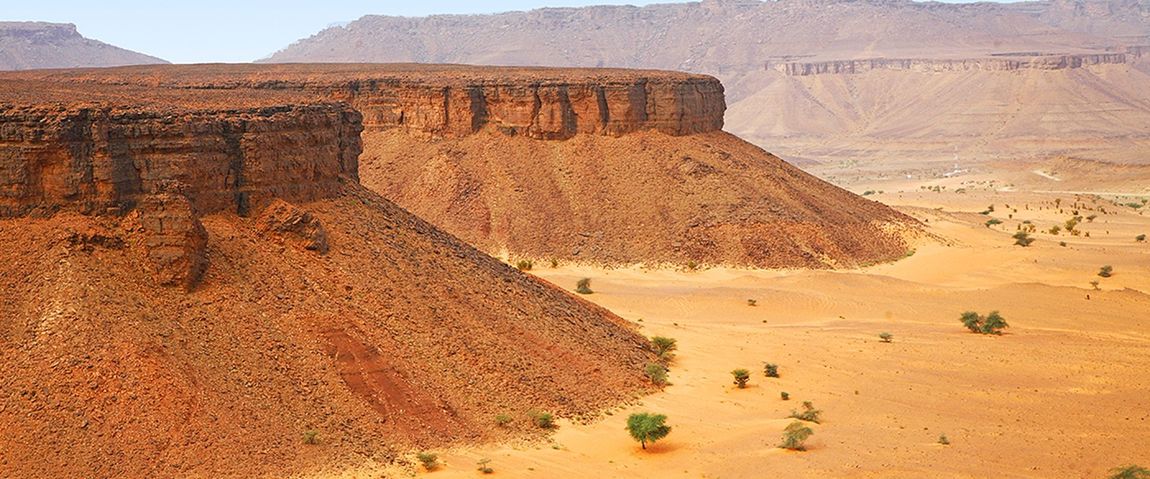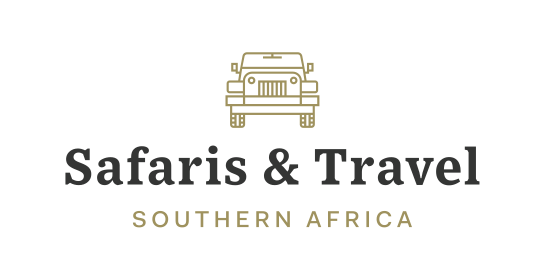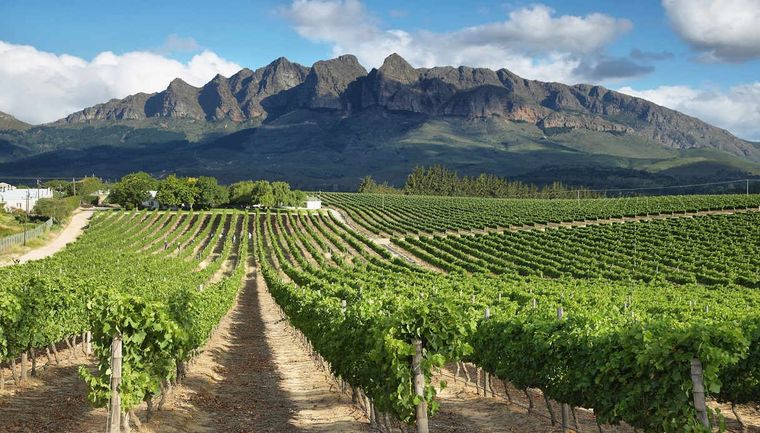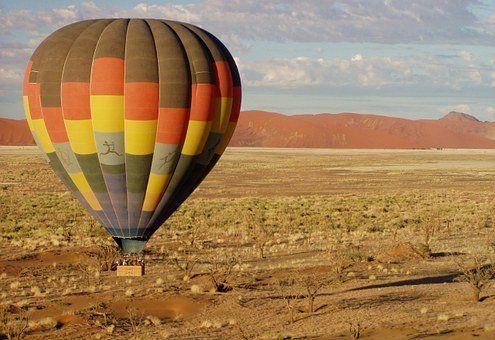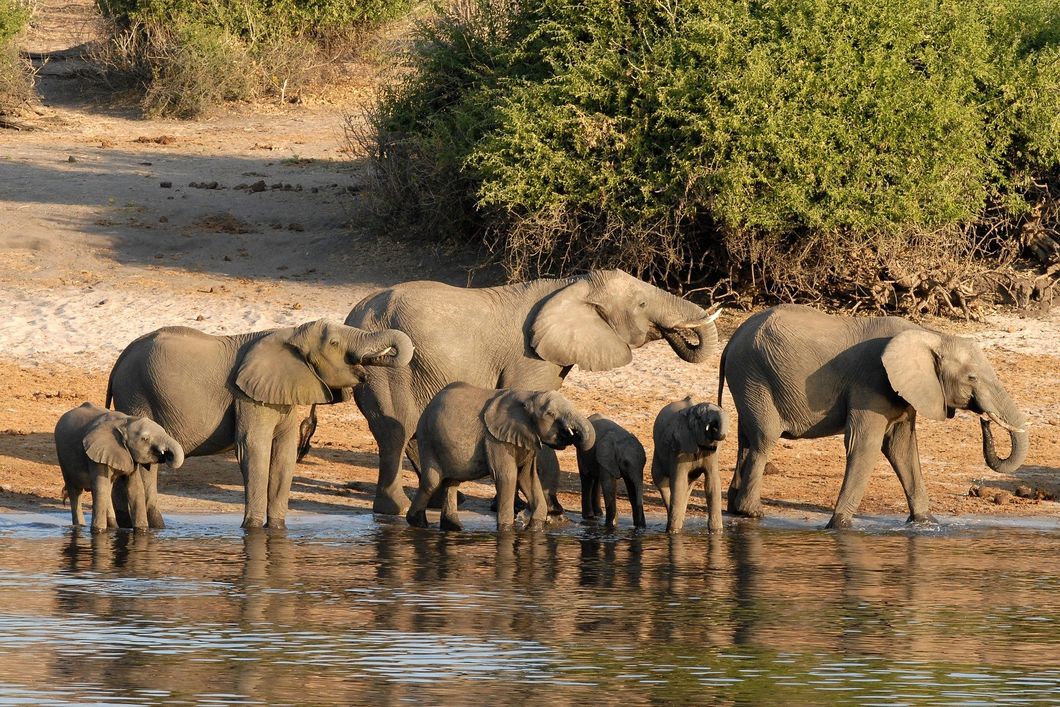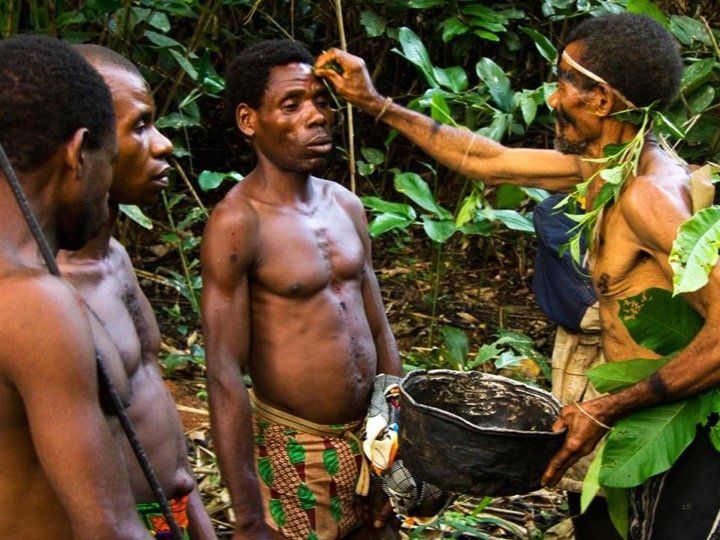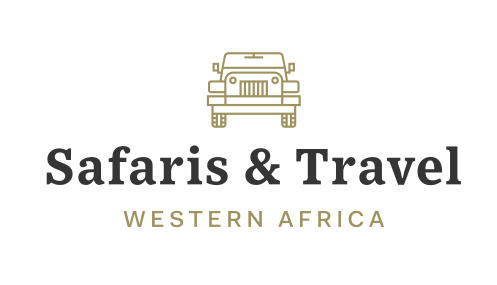SAFARIS & TRAVEL GSA specialized in the African continent
collaborates with HTMS to promote its representations vs. the Italian Trade
Safaris & Travel
"30 years have passed since my first safari in Africa. I've had to repeat that journey dozens of times, each time changing perspective, angle of observation, emotion, until I gave a sense of identity to my sensations and reached the conclusion that my passion would become my job".
This is how Giammarco Rosa, founder of SDT Safaris & Travel, which later became Safaris & Travel, introduced his company to African exploration in 1989. After spending 31 years visiting it far and wide, he still defines this wonderful continent as an "UNEXPLORED LAND".
In short, everyone talks about it, but few really know it. That's why our mission is to introduce the different "shades of Africa", starting with Tanzania, a country full of wonders, from the North with its unique biodiversity, its wild South, the total embodiment of the Africa we imagine, continuing to the unknown West, where the friendly primates play host, ending with the colonial coast and its islands between the East and Africa.
Moving on to the wonderful Kenya, land of a thousand legends as well as master of the most beautiful safaris in the world. Its well-known South passes through the legendary Rift Valley and the region of the Lakes, and moving to the North, its various borders include Ethiopia, the birthplace of the infamous Maasai warriors. Finally, discover the splendid coast as well as its culture-rich beaches, such as the mystical Island of Lamu.
This gave rise to an interest in establishing Safaris & Tavel - Northern Africa, with DMC (Destination Management Company or correspondent in Loco) in Mauritania, Safaris & Travel - Eastern Africa, with its own DMC in Tanzania, Kenya, Uganda and Rwanda and Safaris & Travel - Southern Africa, with DMC in Namibia, South Africa and Botswana.
Our many years of experience on the continent have led to the creation of a network of partnerships and collaborations with operators able to guarantee the same expertise and guidance to the Italian market. The ability to cover a large part of the African continent with a tailor-made approach, both for individuals, groups and MICE, has made this experience part of the HTMS brand.
Our DMC office (Destination Management Company or correspondent in Loco) based in Kampala (Uganda), aims to introduce part of East Africa and its natural and cultural wonders. Created as a solidarity project, the company works in "ecotourism", a word often used in recent years, but not widely implemented.
Discover a landmark destination, the "Pearl of Africa", as Uganda was named by Winston Churchill, and continue through the spectacular landscapes of Rwanda to the mystical DR Congo and its primates. Our staff is made up of professionals who know the area to perfection, such as director Robert, a former guide. Experience a guaranteed service over two countries, with a wide choice of tours, travel ideas, incoming services and fully tailor-made programmes, especially for trekking to spot rare mountain gorillas in all the countries listed.
Get to know an area rich in natural beauty, from the Mountains of the Moon, home to rare mountain gorillas and other various primates, to rainforests like the Nyungwe and lakes like Victoria and Kivu, to the Congo River, passing from the Blue Nile to the Murchison Falls, savannah parks, such as the Queen Elizabeth, the Akagera with its unique bio-fauna and sites of cultural interest, rural villages and ancestral traditions.
Tanzania
Due to its physical conformation, many features make Tanzania special from a naturalistic, anthropological and historical point of view. It is home to Africa's great lakes, the continent's tallest mountain and a long stretch of the Indian Ocean, a melting pot of cultures and ancient civilisations.
The Great Rift Valley, the cradle of human evolution, is home to some of its most spectacular landscapes, while nature, with its diverse ecosystems, is well represented in 22 National Parks (five were created after 2009) and numerous Reserves, accounting for 25% of the protected territory.
Uncover the great migration in the Serengeti, the gigantic baobabs of the Tarangire and the scenic Ngorongoro Crater. You can also visit the remote National Parks in the south and several hidden gems in the west, surrounded by gentle islands that carry the scent of spices from the East. It only takes a few hours to move through Tanzania, from endless savannahs to the remains of ancient Swahili city-states, from an incredible coral reef to the dizzying peak of the infamous Kilimanjaro.
With a quarter of the land covered by parks and reserves, the safari experience is truly unparalleled.
The Great Migration
Across the immense plains of the Serengeti, more than two million herbivores including wildebeest and zebra cross vast green pastures pursued by ravenous predators. This is the spectacle of migration, which repeats cyclically in the circle of life from south to north and vice versa. Lions climb the trees of Lake Manyara, while the Tarangire National Park is dotted with giant baobabs. Further south, in Ruaha and in the old Selous Reserve, more than half of which has become Nyerere Park, lives the African wild dog, almost completely extinct due to human ignorance.
From the blue waters of the Indian Ocean emerge the islands of Zanzibar, Pemba and Mafia, archipelagos that contain a mix of colonial architecture, multicoloured seabeds and enchanting white beaches. The colonial and pre-colonial history of this part of Africa where ancient trade routes were forged by the Arab and Portuguese people, has known the cruel slave trade and is marked by the exploits of well-known European explorers.
Tanzania is a land as fascinating as the flavours and aromas of its spice markets, the colours of its flowering trees and hills, and the beauty of its culture.
Herds of wildebeest constantly invade the track leading to the Serengeti National Park, which in the Maa language, of the Maasai, means "endless wild plain", an appropriate term for a plateau where for hours the horizon is formed by hundreds of thousands of bumbling antelopes, wildebeest, as well as multitudes of zebras and gazelles.
The great migration is dictated by the conjunction of the pressure exerted by the large herds on the pastures with the cycle of rainfall that moves from south to north, continually creating new pastures. In order to survive, the animals follow the rains on a long and perilous journey, allowing animals of the same species to survive in the great prairie.
Between January and March, around 800 000 offspring are born in the Lake Ndutu area in the south of the Serengeti and on the plains of the Ngorongoro Conservation Area, and by April they are already able to follow the adults. In May, the herds gather and begin their migration. It should be noted that this is not a single compact herd, but rather a collection of countless herds, which can number up to 70-80,000.
In June, following the tracks of the Serengeti plain, the wildebeest move towards the Grumeti River and the Western Corridor, then divide into two large herds. The herd, consisting of wildebeest and zebra, approaches the river several times, scouting the banks, and after several approaches to the river, the animals pile up on the bank. It is not known what actually triggers the decision, but at a certain point, one of the animals breaks the mould, with a great leap, dives and begins its fight for survival. Being the first, the animal is the one who risks the most, but soon after, the herd takes off and dives in behind, the river filling up with animals desperately struggling to stay afloat.
They remain in the Masai Mara region until September when, having exhausted the grazing grounds there too, they begin to return via the same route to their native places, to the south in the Serengeti and the Ngorongoro Conservation Area. Crossings can be seen until late November. Once at their destination, they will find the new pastures formed by new rains.
Kenya
Those who visit Kenya are bound to be amazed by the diverse natural environments that characterise its territory: savannahs, mountains, deserts and valleys inhabited by wild animals, timeless peoples manage to convey strong emotions, poignant memories and that undifferentiated state of mind of awe and attraction that is increasingly rare in our world.
Considered by anthropologists as the "Cradle of Humankind", Kenya is also the heart of African safaris, home to the most diverse wildlife species on the entire continent. This includes beautiful wildlife parks, pristine beaches caressed by the "kaskazi", the wind that blows along the coast, beautiful coral reefs, majestic peaks and ancient Swahili towns.
For many, it is the symbol of Africa, the perfect destination for travellers seeking wild Africa and direct contact with nature.
Kenya is one of the most captivating and interesting countries on the African continent. There are many reasons for this interest: ethnographic, thanks to the various tribal groups with different languages and cultures that can be found here; natural, for the extraordinary variety of environments in which the plant and animal worlds live in delicate balance; and cultural, for the complex history of the Swahili city states that have sprung up in the last millennium along the Indian Ocean's coast.
There are three distinct types of landscapes in Kenya: the coastal strip of endless beaches fringed with coconut palms; the huge plateau crossed by the cyclopean Rift Valley that rises in the centre of the country; and finally, the desert and steppe plateau of the north inhabited by the fabulous desert nomads of Nilotic and Hamitic origin.
To safeguard much of its varied territory, Kenya has established numerous parks and nature reserves, making it one of the most preserved regions in the world.
Our DMC office (Destination Management Company or correspondent in Loco) based in Kampala (Uganda), aims to introduce part of East Africa and its natural and cultural wonders. Created as a solidarity project, the company works in "ecotourism", a word often used in recent years, but not widely implemented.
Discover a landmark destination, the "Pearl of Africa", as Uganda was named by Winston Churchill, and continue through the spectacular landscapes of Rwanda to the mystical DR Congo and its primates. Our staff is made up of professionals who know the area to perfection, such as director Robert, a former guide. Experience a guaranteed service over two countries, with a wide choice of tours, travel ideas, incoming services and fully tailor-made programmes, especially for trekking to spot rare mountain gorillas in all the countries listed.
Get to know an area rich in natural beauty, from the Mountains of the Moon, home to rare mountain gorillas and other various primates, to rainforests like the Nyungwe and lakes like Victoria and Kivu, to the Congo River, passing from the Blue Nile to the Murchison Falls, savannah parks, such as the Queen Elizabeth, the Akagera with its unique bio-fauna and sites of cultural interest, rural villages and ancestral traditions.
Mountain Gorillas
The generic name for "Gorilla" was introduced by French scientist, Isidore Geoffroy Saint-Hilaire, drawing his inspiration from the Greek Górillai, a population of wild and hairy females from Libya (a term which at the time indicated the Africa known west of the Nile) mentioned by Hanno in the 6th century BC in his book The Voyage Of Hanno, Commander of the Carthaginians, around the areas of Libya beyond the Pillars of Hercules, which he deposited in the temple of Cronus, translated into Greek two centuries later.
The mountain gorilla can be distinguished from other gorillas by its longer and darker fur, which takes on a silvery grey colour on the back of adult males. Males weigh between 140 and 180 kg, females between 70 and 110 kg. There are two bony ridges on its skull, more developed in males: an upper (sagittal) one and one on the nape of the neck. Mountain gorillas are diurnal and terrestrial animals; although they are able to climb trees, they are the primates best adapted to life on the ground. Locomotion is essentially quadrupedal, but they can travel short distances in a bipedal position.
They are herbivores, feeding mainly on leaves, stems, shoots and, to a lesser extent, bark, roots and flowers. Insects (ants and larvae) and snails also make up a small part of their diet.
An adult male can eat up to 34 kg of plant food in a day, a female just over half that amount.
Females have their first child between 10 and 12 years of age, while males begin mating at around 15 years of age.
Lactation lasts up to three years, although the young supplement their diet with solids from eight months. Mountain gorillas are at very high risk of extinction, being reduced to less than a thousand divided into two populations: one in Uganda's Bwindi Impenetrable National Park, and the other in a small area near the triple border between Uganda, Rwanda and the Democratic Republic of Congo.
However, a census carried out in 2002 showed an increase in the number of the animal compared with 12 years earlier. In spite of the ongoing civil war in the Republic of Congo, the population of mountain gorillas in Virunga National Park is growing, and currently numbers around three hundred.
Uganda
Defined by Winston Churchill as the "Pearl of Africa, a true natural paradise, made up of a great variety of different environments, forgotten for many years and now all to be rediscovered; a friendly and kind population, with great suffering behind it, a smile always on its face and a bright future under construction, the territory could not be more varied: from the volcanoes of the South-West to the savannah of the North-East, where the herds of elephants that migrate from Sudan to Kenya cross.
Surely Uganda is the only destination where the number of primate species in its forests is as impressive as the variety of antelopes on the plains, where the tender emotion of holding the hand of a young chimpanzee or a close encounter with the fearsome mountain gorilla is a unique experience. Biodiversity is all the more important because Uganda is much smaller than the other three African nations that can boast the presence of more than a thousand species of birds, where the fascination of a thousand iridescent colours of the same ones flying through the forest is as priceless as the sight of high mountains covered by perennial snows that only emerged from the imagination of ancient geographers.
But the country offers much more than this. There is the Nile River with its headwaters, which has so long concealed its mysterious origin with the impressive Murchison Falls; the snow-capped peaks of the Ruwenzori; the Virunga volcanoes and Mount Elgon offering splendid mountain scenery; the idyllic series of islands in Lake Victoria; many volcanic lakes framed by lush rainforest, places that became famous for the daring journeys of the first Westerners to explore these lands where distant herds of buffalo graze, dark green vegetation that contrasts with bright red earth, and the sounds of animals such as zebras, leopards, lions, antelopes, hippopotamuses and elephants, which move recklessly through the savannah, a land also ploughed for the sake of discovery or for the sake of fame and wealth.
Rwanda
Rwanda is a great little country in the heart of the African continent. The "Land of a Thousand Hills", a corner of Africa that is nothing short of splendid for its history, natural beauty and unique wildlife.
The Old Kingdom of Rwanda sank into the depths of a colonial domination that only stirred up hostility in the people and as a result, with the arrival of independence, turned into death and bloodshed, until the extermination of almost a million Tutsis in 1994.
Unfortunately, amidst worldwide disinterest, Rwanda was liberated by the Rwandans alone, transforming the country today into a stable regime and, above all, with wonders to explore. The Volcanoes National Park, a protected area of great scientific and touristic importance in a high mountain park with some of the most beautiful landscapes on the African continent, is home to one of the world's most endangered animal species; the mountain gorilla.
The Karisimbi, Bisoke, Sabyinyo, Gahinga and Muhaniura volcanoes, with altitudes ranging from 4,500 m to 3,470 m, are covered by dense rainforest where, in addition to the mountain gorillas, hundreds of species of birds and numerous other animal species live, including the buffalo and the forest elephant. The breathtaking Lake Kivu and the Nyungwe Rainforest, the largest mountain forest on the African continent, is teeming with diverse ecosystems.
The Akagera National Park on the border with Tanzania, characterised by numerous wetlands and shrub savannah, offers shelter to the vast African fauna.
Mauritania
Mauritania is a naturally beautiful country where every traveller can expect great thrills. Our DMC (Destination Management Company or correspondent in Loco) based in Nouakchott makes wishes come true with an organisation made up of 11 people plus other freelance guides, specialised in desert tours.
All the tours are specially designed to get to know the mystical, majestic nature below and the anthropological angle that has stood more than a thousand years with the Mauri, also called Blue Men, and ancestral traditions, such as the gavage.
Ranger drivers and transport
Our company organises trips tailor-made for individuals, groups, SIC and MICE. Visiting bathing establishments is not organised although the area's beaches are equipped. There is no real organisation other than short stays in igloo tents or sleeping bags.
Kingdom of the splendid desert and of its poetry, which purifies the mind and frees hearts subjugated by such beauty; a place where people, with a nomadic soul, guard and exercise the remote know-how of the sands...the traveller seems to live in an unknown atmosphere and in a time now lost in the distant past; the most humble and simple things, such as bread, firewood and the desired water, assume extraordinary importance.
Here, one savours the ineffable sweetness of the immense desert hemlines and the sand in the air, moved at times by an impetuous wind, which frays the clouds and irradiates these places with a light from which it is almost impossible to escape. The scent of dry herbaceous plants, the murmur of the wind among the palm trees, the cries of the dromedaries, the undulating expanse of the ocean, the dunes the colour of precious gold welcome the traveller, enveloping them in a warm, persuasive ancestral embrace.
A journey that gives rise to everlasting memories, between the crystalline ocean and desert abysses.
Our office in Loco was established as an accommodation agency in Johannesburg, through its founder and current executive director, who has been present in the area for 30 years. The company's objective is to develop a self-drive project for the Italian market, firstly in South Africa and then in Namibia, carefully studying the dynamics and taking advantage of the entire organisation.
After a thorough analysis of the territory, the office was first moved to Cape Town and then transformed into a DMC, personally selecting every single member of its in-house and freelance staff. In 2014 it opened a section dedicated to groups, incentives and Mice. This is also the case for Namibia, as it is still very difficult to develop a Mice product and groups of over 16 people due to limited accommodation facilities and the lack of quality roads.
Botswana is the latest addition to the company, well known for its "mobile camps" in the north of the country and the great classic, lodges and fixed camps throughout Botswana.
Our office in Loco to date organises: South Africa; Self-Drive Honeymoons, SIC, Groups, MICE, Incentives, Namibia; Gondwana Collection Hospitality Camp & DMC
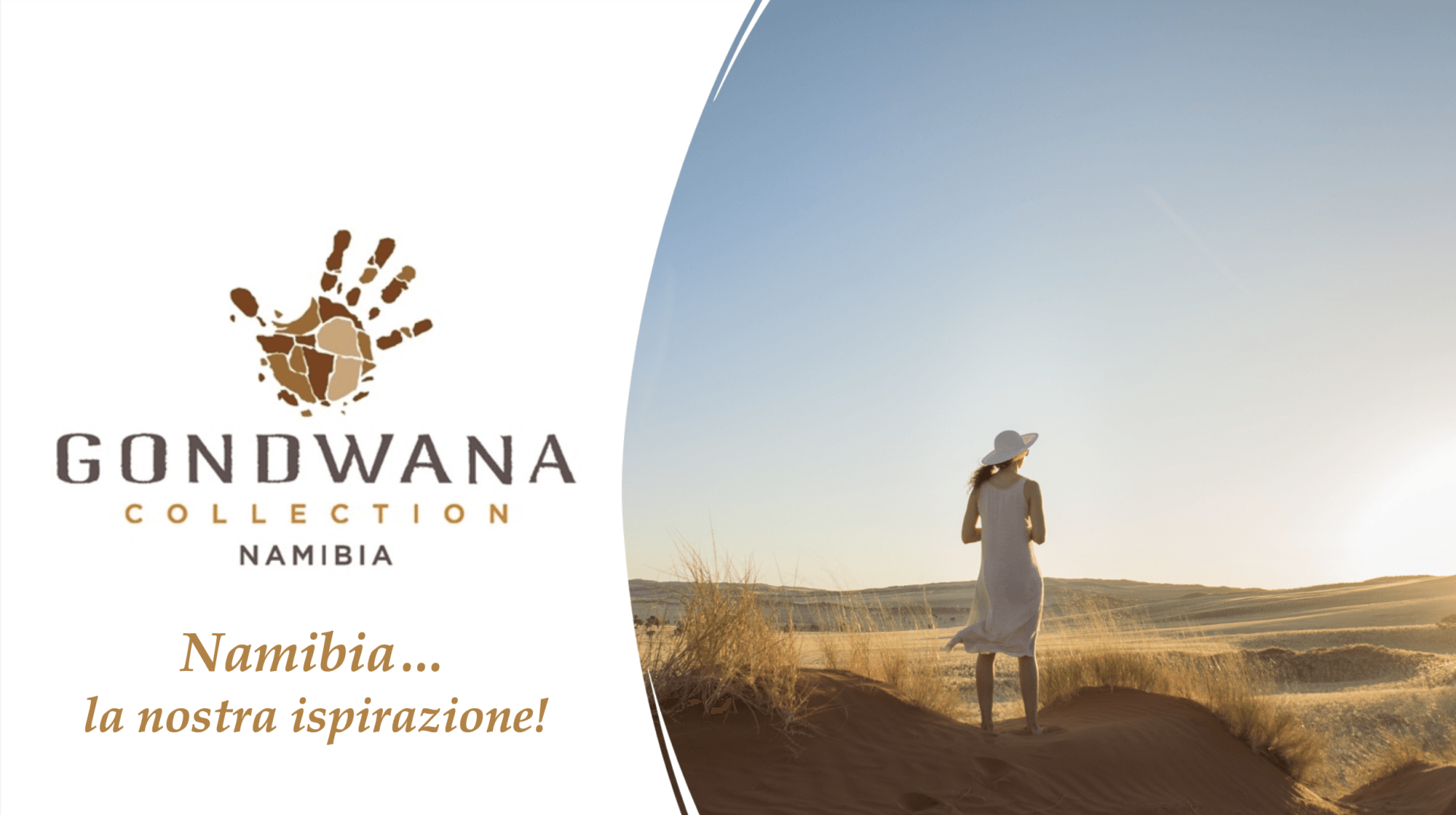
South Africa
It is impossible to describe South Africa comprehensively in a few words: if you were to collect everything in a book, it would take thousands of pages. South Africans themselves are still getting to know each other after living "apart at home" for years, and many previously inaccessible places have recently opened up to tourism. A tour of South Africa is like a visit to the British Museum in London: as you move from one area to the next, you will encounter very different periods, contrasting sensations and parameters. You will feel as if you are floating through the history of the continent, reflected here in the very different faces of the people.
It is an open-air museum, both in terms of nature and its incredibly varied territories, and in terms of the interaction between different cultures forced to find new balances. In the space of a few hours, you will receive ocean waves, metropolitan glimmers, and hints of Asian flavours and aromas at the spice markets. The harmonious sounds of the forest alternate with the pastel colours of the country valleys, the flora is constantly changing, as are the somatic features of the people and the architecture of every cultural origin. Located at the southern tip of Africa, South Africa is bathed by two oceans: the Indian to the east, influenced by the warm current of the Mozambique Channel coming from the equator, and the Atlantic to the west, with the cold current of Benguela, coming from the South Pole. Covering an area of 1,223,226 square kilometres, the equivalent of the sum of Italy, France, Germany, Holland and Belgium (about four and a half times the size of Italy), South Africa is made up of nine different provinces: Gauteng, North-West, Limpopo Province, Mpumalanga, KwaZulu-Natal, Free State, Western Cape, Eastern Cape and Northern Cape.
It has a population of 54 million, of which 39 million are black (mainly Zulu and Xhosa), 4.7 million are white, 8 million are of mixed race and 1 million are Indian.
It is a country very different from other African states in that it enjoys a political, social and economic system very similar to that of the West. It has the most developed road network on the African continent. Most of the roads are well signposted and almost all of them are paved and comparable to our ring roads (except for the areas bordering the parks to reach private reserves or state camps). A 4x4 vehicle is not essential except in the North West to Richtersveld National Park, Augrabies Falls and during the rainy season in Kwazulu Natal. Few countries in the world can compete with the beauty and variety of its landscapes, such as the natural scenarios it offers, together with a high international standard of accommodation and a thousand pleasant surprises for the demanding and attentive tourist, whose discovery will prove to be even greater than any expectation.
It is a country in continuous and rapid change that will make all stereotypes and preconceptions fall away. It is a stereotype that all the streets of Johannesburg are swarming with thieves, or that the roads in the Kruger National Park are as populated as motorways. Johannesburg can be visited interestingly and safely, or it is enough to go a little further off the beaten track to discover unspoiled flora and fauna even in the immense Kruger. The stereotype of the Big Five is also outdated: South Africans are proud to have the Big Six, thanks to the possibility of approaching whales, as in few other places in the world.
Namibia
Namibia is a unique country in terms of the variety of living species and natural beauty that adorn it, and because of its many facets, it is known as the "Diamond of Africa". Exciting photographic safaris in search of African wildlife, botanical explorations to discover the Welwitschia Mirabilis, the Kokerboom or the Botteer Tree, trekking along canyons and fascinating semi-desert landscapes are some of the many experiences that can be had during a trip to Namibia. Of course, it doesn't end here! From the sparkling waterfalls of Epupa to the rock paintings and engravings of Twyfelfontein; from the seal colonies of Cape Cross to the shipwrecks of the Skeleton Coast; from the pink flamingos of Sandwich Harbour to the sunsets of the oldest dunes in the world in the Namib Desert; from the rich fauna of the Etosha National Park to the elegant Himba women originally from Angola, from the Fish River Canyon to the wild Damaraland. But don't forget the cities; the ghost town of Kolmanskop, the colonial German towns of Luderitz and Swakopmund, and the capital Windhoek.
Nestled between the Kalahari and the cool Atlantic, it is a country rich in natural resources and unquestionable scenic beauty, which has inherited a solid modern infrastructure and a wide variety of cultures, including those of the San, Herero, Khoi Khoi, Ovambo and Kavango. Namibia is famous for the unparalleled contrasts in its landscape. The Namib Desert, stretching along the coast, unique in its desolation, with its dunes, is believed to be the oldest desert in the world.
The central plateau, with its bramble-strewn savannahs, ends in the majestic Fish River Canyon in the south. In the north of the country, the landscapes vary from the open plains of the Etosha Plain to the forested savannah, the Skeleton Coast faces the ocean unfalteringly, Kaokoland offers desert expanses and traditional himba cultures, and the lush green Caprivi.
Rock art from prehistoric times, and the incredible Welwitschia mirabilis, also known as the fossil plant, give visitors a glimpse of times gone by. Namibia's parks are among the best in Africa, and its rangers and operators are highly skilled professionals.
Bordering Angola to the north, Zambia to the north-east, Botswana to the east and South Africa to the south-east, it is about three times the size of Italy, with a population equal to that of Liguria. Crossed by the Tropic of Capricorn, it has a compact shape similar to a rhombus; it extends for 1500 km. from North to South and for about 700 km. from East to West. Its colours are one of the country's peculiarities, ranging from all shades of ochre to mauve and violet, interspersed with the red, black and white of the mountains, the blue and turquoise of the sky, the emerald of the marshlands and the pink of the flamingos.
Botswana
This landlocked country in the centre of southern Africa, about the same size as France and with a rather uniform appearance, finds the greatest expression as "master of the wilderness". The Bushmen, who arrived more than 30,000 years ago, were the first inhabitants of the country and left traces of their migration throughout southern Africa, drawing graffiti and paintings on the cliffs. They were followed by Khoi-Khoi (Hottentots) pastoralists and then by groups of Bantu people from Cameroon, who migrated from the north-western and eastern regions of Africa around the first or second century AD and settled along the Chobe River. Some groups of Bantu descended into other areas, giving rise to the Southern Sotho of Lesotho and the Northern Sotho of South Africa, while those remaining in the territory of present-day Botswana came to be known as the Tswana. They lived until the 18th century on relatively friendly terms in small tribes scattered around the Kalahari.
Here, you will find Africa's wildest and most authentic parks and reserves where you can discover boundless, unspoilt landscapes and the wonder of Africa's small and large animals in true freedom. The hotel facilities reserved for today's travellers are authentic, refined, and include exclusive tented camps that don't overlook comfort and luxury, with the utmost respect for the environment and the surrounding natural heritage. Botswana has maintained the wild flavour of its unspoilt nature, where the incredibly beautiful landscapes arouse unforgettable emotions. Immense spaces and harsh contrasts enhance one of the earth's last paradises, still untouched by overpopulation or thoughtless urbanisation. From the parched sands of the Kalahari desert, the last home of the Bushmen, we move on to the crystalline waters of the lagoons and the forests of the Okavango Delta with its marshes teeming with wildlife. Botswana is a precious oasis that still preserves a unique heritage of flora and fauna.
The salt pans and the Makgadikgadi Pans National Park, which are as vast as Portugal, formed the seabed over much of the northern part of the country some 5 million years ago.
Botswana is the African country with the largest extension of protected areas, parks and reserves have no borders and animals move freely between the various regions of the country. Tourism is controlled to prevent a devastating environmental impact: no large hotels are allowed inside the parks, there are only lodges, with tented camps or bungalows, which can accommodate a maximum of 20-30 guests. Each property is strictly controlled by the government to protect the country's ecosystem. A trip to Botswana may still seem like an exclusive destination, but its beautiful and fragile ecosystems must be protected.
Cameroon
Many countries adopt the name "Africa in miniature", thus recognising the presence of a large number of geographical, naturalistic, anthropological and climatic aspects on their territory, such as to forge this name. For the sake of clarity, the only country on the African continent that hosts most of these elements is Cameroon. The lush, largely unspoilt vegetation of the dense equatorial forest of the south with its maritime Douala, to the mountain ranges of the west covered with trees and a flora that looks more like Switzerland than an African country where, in addition, you will find Mount Cameroon, a volcano that is still active. The golden beaches of the coastline, lapped by the blue waves of the Atlantic Ocean are bordered only by coconut palms, the green highlands of the Adamawa, a shrub savannah that is home to a large number of large wild animals. The barren Sahelian savannah, home to large herds of elephants and groups of nomadic shepherds; the semi-desert region of the far north adjacent to the great Lake Chad, part of the many rivers, lakes and waterfalls scattered throughout the country. The anthropological part is the real jewel with over 240 ethnic groups with as many languages recognised as dialects, coming from Bantu, Semi-Bantu, Nilotic, and other strains. Travelling in Cameroon is in this sense an ethnocultural experience. It is essential to know the customs and traditions of the pygmy hunter and gatherer peoples, inhabitants of the dense tropical forests and great connoisseurs of them, or the millenary traditions of the Chefferie rooted throughout the country but of great importance in the West with the Bamoun or Bamileke. Lastly, there are numerous Parks and Nature Reserves of varying interest, where the African wildlife lives, from small to large animals, making it possible to go on game drives, whether in the arid North with elephants, giraffes, lions, antelopes, or in the southern forest dominated by lowland gorillas, chimpanzees, giant frogs, forest elephants, gazelles, leopards, and a few changes on the vast plains of the centre, encountering hippos, crocodiles, elephants and lions. This kaleidoscope of attractions enclosed in a strip of land, almost twice the size of Italy, has only recently opened up to organised tourism, giving travellers a feeling of discovery rather than travel.
Safaris & Travel Western Africa is a DMC established in 2015 as a result of its founder's experience, who has dedicated more than 15 years to the discovery of West Africa, first as a tour guide in some of its countries, such as Cameroon and Gabon, and as an organiser, taking over and structuring some DMC offices in Loco, selecting and training all staff, from booking to guides/drivers.
A leader in the design and implementation of programmes on Cameroon destinations with headquarters and branches in Gabon, Nigeria, Republic of Congo (Brazzaville), Chad, Central African Republic, Benin, Togo and Ghana, the DMC boasts on-site offices in all the above countries and, a factor of great importance, extensive knowledge of the local area. Until recently, these countries have been little considered in terms of tourism, but are rich in culture, with a biodiversity that is unique in the world, as well as one of the most fascinating histories, all of which are still little known. The DMC is responsible for developing cultural, naturalistic, ethnographic and seaside trips.
Tailor-made trips for FIT individuals, leisure groups, pre-arranged groups and SIC departures.



